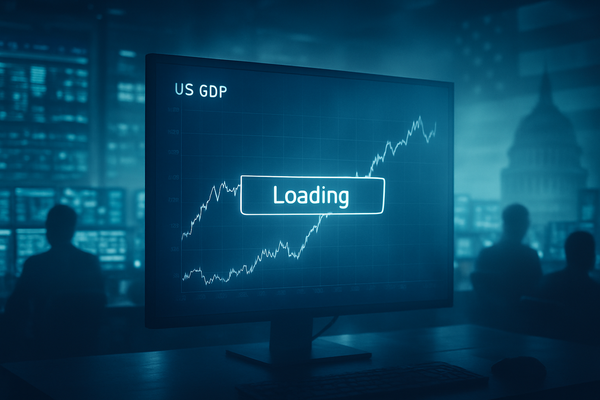Global Markets Surge: A Broad Rally Redefines Investor Optimism

The global stock market is currently experiencing a period of sustained positive momentum and a broad-based rally, pushing major U.S. indices to unprecedented all-time highs. As of late October 2025, the S&P 500, Dow Jones Industrial Average, and Nasdaq Composite have all recorded significant gains, with the S&P 500 (SPX) alone achieving a remarkable 38% increase since its April low and an over 8% surge in the third quarter of 2025. This widespread ascent, encompassing even small-cap stocks, signals a pervasive market buoyancy, marking the third year of this robust bull market which began in October 2022.
This powerful market upswing carries immediate implications for investors, businesses, and the broader economy. While fostering a sense of wealth and confidence, it also raises questions about market valuations and the sustainability of such rapid growth. The current environment is characterized by enthusiastic investor sentiment, yet it necessitates careful consideration of underlying drivers and potential future shifts.
The Unprecedented Ascent: A Market in Full Bloom
The current market rally in late 2025 is a testament to a confluence of powerful economic and technological forces. Specific details reveal an exceptionally strong corporate earnings season for the third quarter of 2025, with approximately 85% of S&P 500 (SPX) companies surpassing profit forecasts and 70% exceeding revenue estimates. Analysts are projecting an impressive 15% earnings growth for S&P 500 companies in 2025, significantly above the 10-year average. This robust performance is broad-based, spanning technology, healthcare, and consumer discretionary sectors.
The timeline leading up to this moment traces back to an October 2022 low, from which the bull market steadily gained traction. A critical catalyst has been the anticipation of an accommodative monetary policy from the Federal Reserve. Easing inflation concerns have paved the way for expected interest rate cuts in late 2025 and into 2026, with market watchers anticipating one to two more cuts, including a high probability of an additional cut in December. Historically, rate-cutting cycles, especially in the absence of a recession, have correlated with solid S&P 500 returns. Key players include central banks, major financial institutions, and leading technology companies.
Another profound driver is the relentless advancement in Artificial Intelligence (AI). Enthusiasm for AI and automation is transforming industries, fueling robust AI capital spending, and creating substantial investment opportunities. Companies like Qualcomm (QCOM) have seen significant stock jumps after unveiling new AI chips for data centers, underscoring the sector's impact. Adding to the optimism are positive U.S.-China trade developments, with a framework for trade discussions encompassing rare earths, soybeans, and TikTok (BDNCE) established ahead of a planned meeting between President Donald Trump and Chinese leader Xi Jinping. The U.S. economy itself demonstrates resilience, with some experts projecting a 0% chance of recession for the upcoming year, supported by healthy consumer spending and a resilient labor market.
Winners and Losers in the Bull Market's Embrace
The sustained market rally, while broad, is creating distinct winners and losers among public companies and sectors. At the forefront of the beneficiaries are the Big Tech or "Magnificent Seven" companies, including Apple (AAPL), Alphabet (GOOGL), Amazon (AMZN), Microsoft (MSFT), Meta Platforms (META), and Nvidia (NVDA). These mega-cap technology giants possess healthy balance sheets, robust cash flows, and are making substantial investments in AI infrastructure and research, positioning them for continued growth. Nvidia, in particular, continues to dominate the AI hardware market with its GPUs, experiencing high demand. Amazon is undergoing efficiency drives to ramp up AI and logistics spending, boosting margins, while Qualcomm (QCOM) and AMD (AMD) are also benefiting from the surging demand for AI chips.
Cloud Infrastructure Providers, essential for supporting the burgeoning AI ecosystem, are also poised for significant gains. Selectively, the Financial Services sector is benefiting from an expected pickup in mergers, acquisitions, and IPOs, generating higher advisory fees. Innovative fintech companies integrating AI, such as PayPal (PYPL) with its OpenAI partnership, are seeing significant stock appreciation. Industrials and Capital Goods companies are thriving due to strong order books and policy-led capital expenditure. Healthcare and Consumer Discretionary sectors are also expected to perform well, supported by resilient consumer spending and easing inflation pressures.
Conversely, certain sectors and companies may underperform or face headwinds. Companies with High Debt Loads could face increased interest expenses, even with anticipated rate cuts, as the overall cost of capital remains higher than in previous ultra-low rate environments. Traditional, Cyclical Industries Less Exposed to AI might find their growth overshadowed by the dynamic technology sector. Real Estate has shown signs of struggle, likely due to its sensitivity to interest rate movements. Furthermore, some analyses suggest an underweight positioning for certain Commodity Sectors (e.g., Oil & Gas, Cement, Metals). While AI is a powerful growth driver, the significant corporate investment versus the often-unprofitable nature of many AI projects raises speculation about a potential economic bubble within the tech industry, posing a risk to pure-play Quantum Computing companies which may not see profitability in the near term.
Broader Horizons: The Rally's Wider Significance
The sustained market rally in late 2025 is more than just a fleeting moment of investor enthusiasm; it signifies deeper shifts in the economic landscape and aligns with several broader industry trends. Primarily, it underscores the accelerating Artificial Intelligence (AI) Revolution. Companies that are effectively integrating AI into their operations, products, and services are demonstrating superior profitability and growth, securing significant competitive advantages. This trend is evident in the robust performance of the tech and semiconductor sectors, where AI advancements are directly translating into stellar results. Beyond AI, the rally highlights pervasive Digital Transformation and Efficiency Gains across diverse sectors, from manufacturing to technology, signaling a more agile and productive global economy.
The ripple effects are substantial. Competitors within industries are compelled to match the innovation and performance of their high-flying peers, potentially triggering a wave of strategic investments, mergers and acquisitions, and operational overhauls focused on AI and digital solutions. Companies unable to adapt may struggle to maintain market share. Supply chain partners, particularly those serving the thriving industrial and tech sectors, are likely to experience increased demand and improved business prospects, fostering greater collaboration. This period also witnesses a significant reallocation of capital towards sectors demonstrating robust innovation and profitability, favoring companies with strong AI integration.
From a regulatory and policy standpoint, a prolonged bull market often draws increased scrutiny. Central banks, like the Federal Reserve, will closely monitor market exuberance for signs of asset price inflation or overheating, which could influence future interest rate decisions towards a more hawkish stance if inflation re-emerges. Regulators may also enhance oversight to prevent the formation of economic bubbles and review measures like circuit breakers to ensure market stability. The dominance of certain tech and industrial giants, particularly those leading the AI revolution, could attract increased antitrust scrutiny if their market power is perceived to stifle competition. Furthermore, geopolitical developments, such as potential U.S.-China trade deals, continue to influence market sentiment and specific sectors, with governments increasingly prioritizing national security in economic policy.
Historically, the current rally shares characteristics with past periods of technological enthusiasm, such as the Dot-Com Bubble of the late 1990s, and periods of economic recovery, like the post-Global Financial Crisis bull market (2009-2020). However, the broad-based nature of this rally and its emphasis on fundamental corporate strength, rather than purely speculative trading, suggest a potentially more sustainable growth trajectory. Nevertheless, historical precedents, like Japan's asset price bubble in the 1980s or the Roaring Twenties, serve as cautionary tales against complacency, reminding investors and policymakers to remain vigilant for signs of overheating or speculative bubbles that could lead to significant corrections.
Navigating Tomorrow: What Comes Next for Investors
Looking ahead, the stock market, having achieved significant gains in late 2025, is poised for a dynamic period characterized by continued growth potential alongside persistent challenges. In the short term (late 2025 - 2026), the market is expected to exhibit ongoing volatility, influenced by economic data, inflation reports, and geopolitical developments. While mega-cap tech stocks have been primary drivers, analysts anticipate a broadening of earnings growth, potentially leading to sector rotation and opportunities in small-cap and value stocks. The Federal Reserve's anticipated interest rate cuts through 2026 are expected to support market gains, but stubborn inflation remains a key risk, potentially eroding consumer purchasing power. Analysts also caution about potential 5% to 10% pullbacks, which are considered normal in a healthy bull market and could present buying opportunities.
For the long term (2027 and beyond), the AI boom is viewed as a structural shift that will continue to power global economic expansion. While some forecasts suggest lower overall market returns over the next decade compared to the past, others, like Ed Yardeni of Yardeni Research, anticipate the S&P 500 (SPX) reaching 8,000 by 2026 and 10,000 by 2030, with a possibility of 15,000 by 2035. Emerging markets are also expected to play a more prominent role, and a "productivity revolution" driven by AI could lead to significant economic shifts.
Investors will need to implement strategic pivots. Diversification, with an emphasis on low-volatility and defensive holdings, is recommended. Shifting allocations beyond large-cap tech to mid-cap stocks or equal-weighted S&P 500 indexes could prove beneficial. Defensive plays, focusing on companies with consistent cash flows and real pricing power in sectors like energy, infrastructure, and healthcare, may outperform during economic slowdowns. Hedging strategies, such as covered calls or put options on assets like gold, could also be prudent given market uncertainties.
Emerging market opportunities include continued growth in AI-related sectors, renewable energy, healthcare, e-commerce, and fintech. The demand for data centers driven by AI will particularly benefit energy infrastructure. An easier environment for mergers and acquisitions is also anticipated due to more accessible financing. However, significant challenges persist: stubborn inflation and the Federal Reserve's response, renewed US-China trade disputes, and geopolitical tensions. Global economic growth is expected to moderate, with a potential for a technical recession in the U.S. in 2026. Concerns about stretched valuations and a potential "AI tech bubble" also loom, suggesting that investor expectations for certain tech sectors might be too high.
Concluding Thoughts: Sustaining the Momentum
The sustained positive momentum and broad market rally in late 2025 highlight a period of significant economic vigor and technological transformation. Key takeaways include the robust corporate earnings, the supportive role of anticipated accommodative monetary policy, and the pervasive impact of AI advancements across industries. The market's broad-based nature suggests a more fundamental strength compared to rallies driven by a narrow set of stocks, yet elevated valuations, particularly among mega-cap technology firms, warrant warrant careful consideration.
Moving forward, the market will likely remain influenced by the interplay of these powerful drivers and persistent risks. The lasting impact of this rally could be a redefinition of productivity and growth paradigms, driven by AI, leading to sustained economic expansion. However, it also underscores the importance of vigilance against speculative excesses and the need for adaptive investment strategies.
Investors should watch for several key indicators in the coming months: the Federal Reserve's actual interest rate decisions and their commentary on inflation, further developments in U.S.-China trade relations, and the ongoing evolution of corporate earnings, especially outside the dominant tech sector. Monitoring geopolitical events and any signs of overheating in specific market segments will also be crucial. A balanced, diversified, and fundamentally driven investment approach will be essential to navigate the opportunities and challenges of this dynamic market environment.
This content is intended for informational purposes only and is not financial advice



